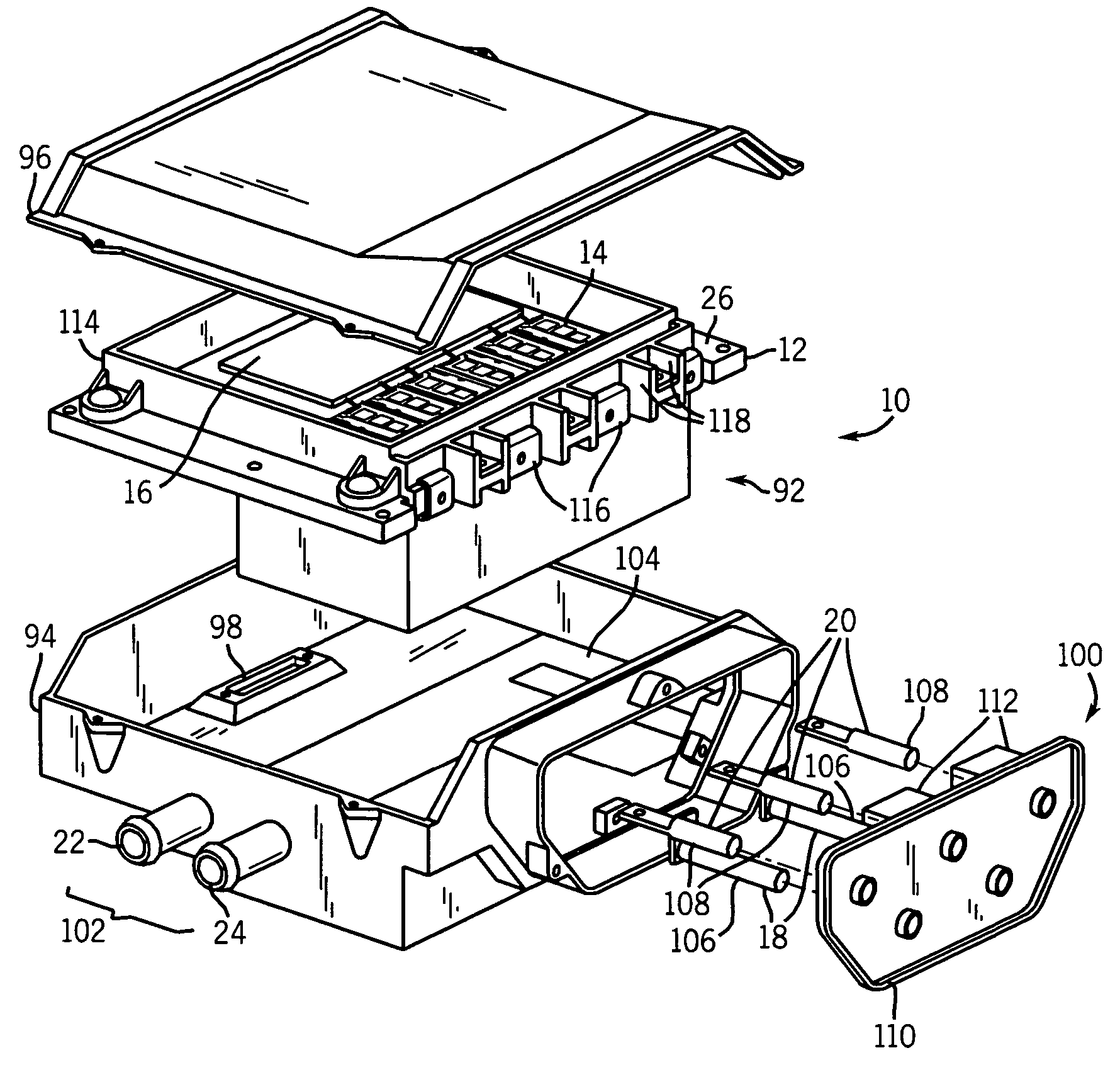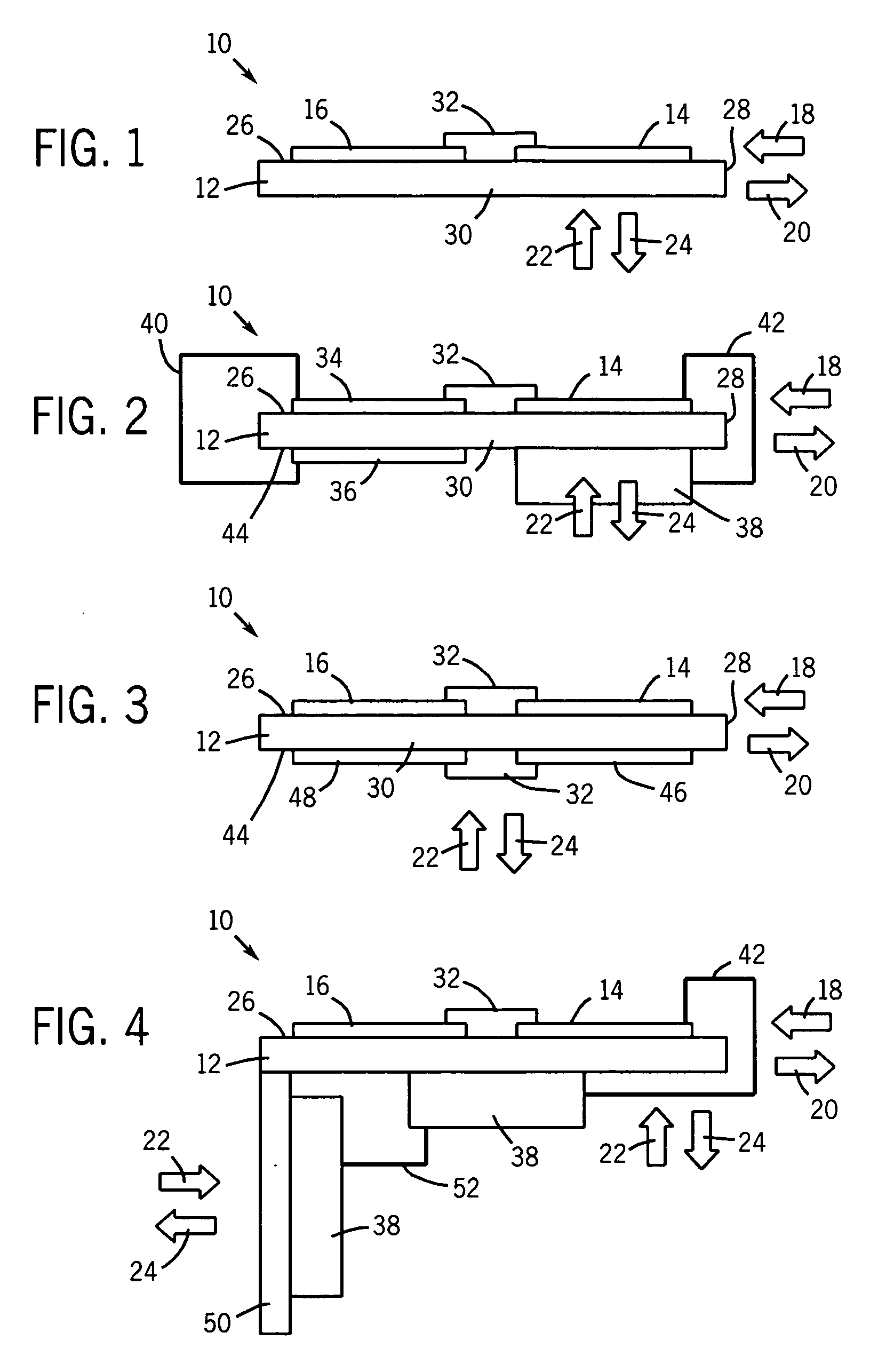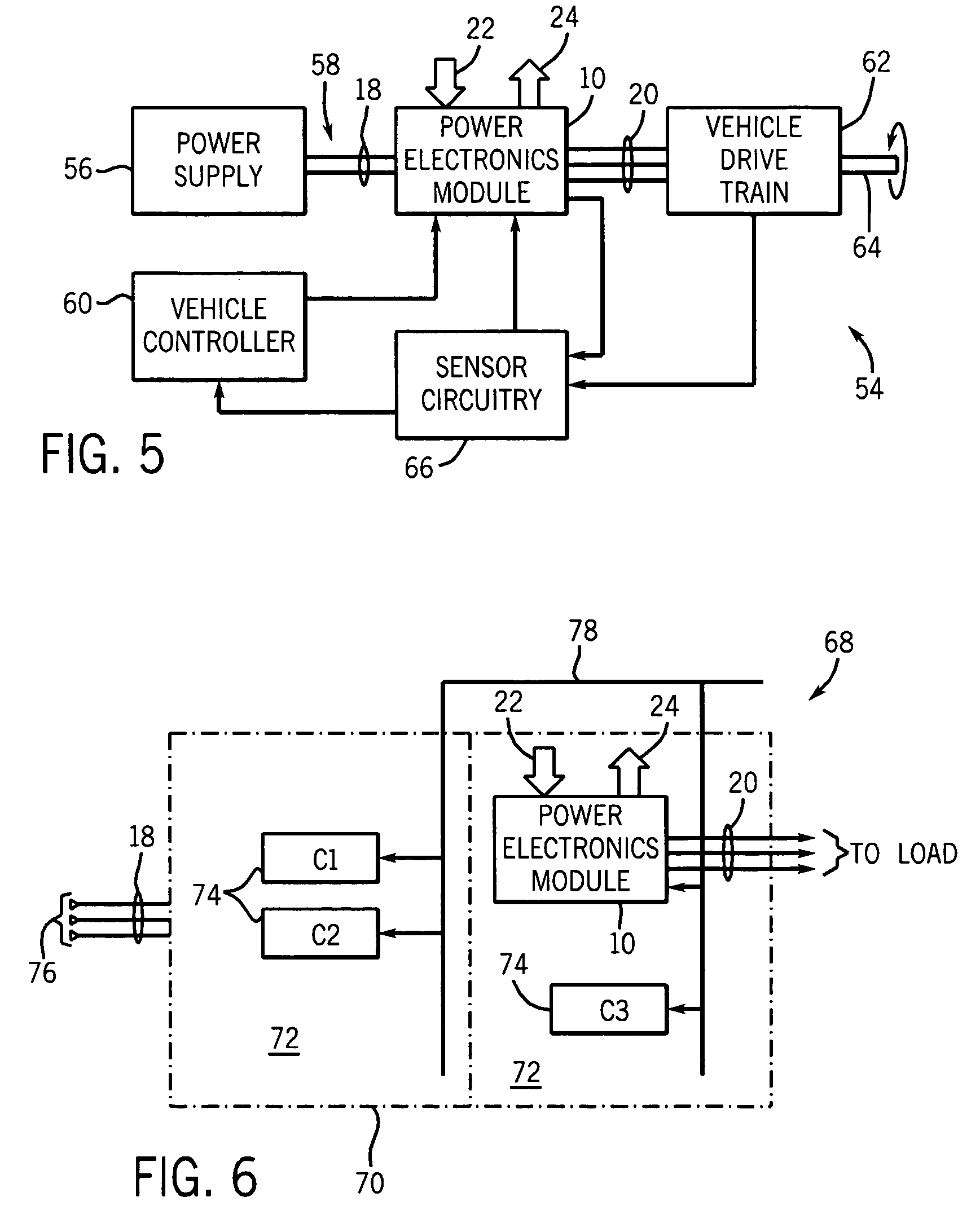Cooled electrical terminal assembly and device incorporating same
- Summary
- Abstract
- Description
- Claims
- Application Information
AI Technical Summary
Benefits of technology
Problems solved by technology
Method used
Image
Examples
Embodiment Construction
[0051] Before detailing specific embodiments of the inventive technique as presently contemplated, certain definitional notes are in order. Firstly, reference is made in the present disclosure to power devices and subassemblies incorporating such devices. Such devices may include a range of components, such as power electronic switches (e.g. IGBTs, FETs) of various power ratings. The devices may also include gate driver circuitry for such components, sensing and monitoring circuitry, protection circuitry, filtering circuitry, and so forth. The devices may be provided in the subassemblies in various groupings, both integrally and separate from supporting substrates and / or thermal expansion coefficient members and heat transfer elements. Reference is also made herein to energy storage and conditioning circuitry. Such circuitry may vary in composition depending upon the particular configuration of the associated power electronic devices and circuits. For example, in inverter drive appl...
PUM
 Login to View More
Login to View More Abstract
Description
Claims
Application Information
 Login to View More
Login to View More - R&D
- Intellectual Property
- Life Sciences
- Materials
- Tech Scout
- Unparalleled Data Quality
- Higher Quality Content
- 60% Fewer Hallucinations
Browse by: Latest US Patents, China's latest patents, Technical Efficacy Thesaurus, Application Domain, Technology Topic, Popular Technical Reports.
© 2025 PatSnap. All rights reserved.Legal|Privacy policy|Modern Slavery Act Transparency Statement|Sitemap|About US| Contact US: help@patsnap.com



